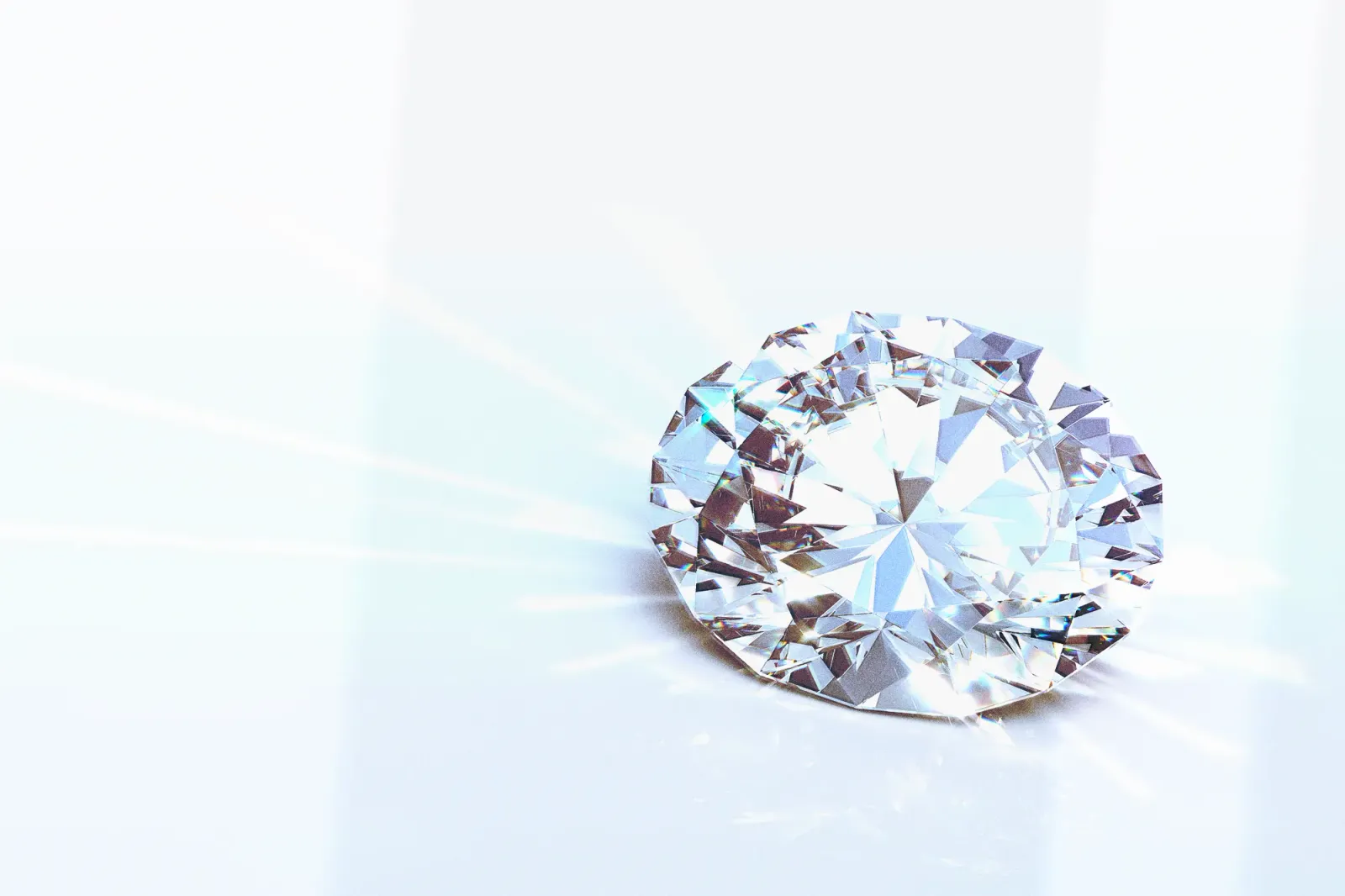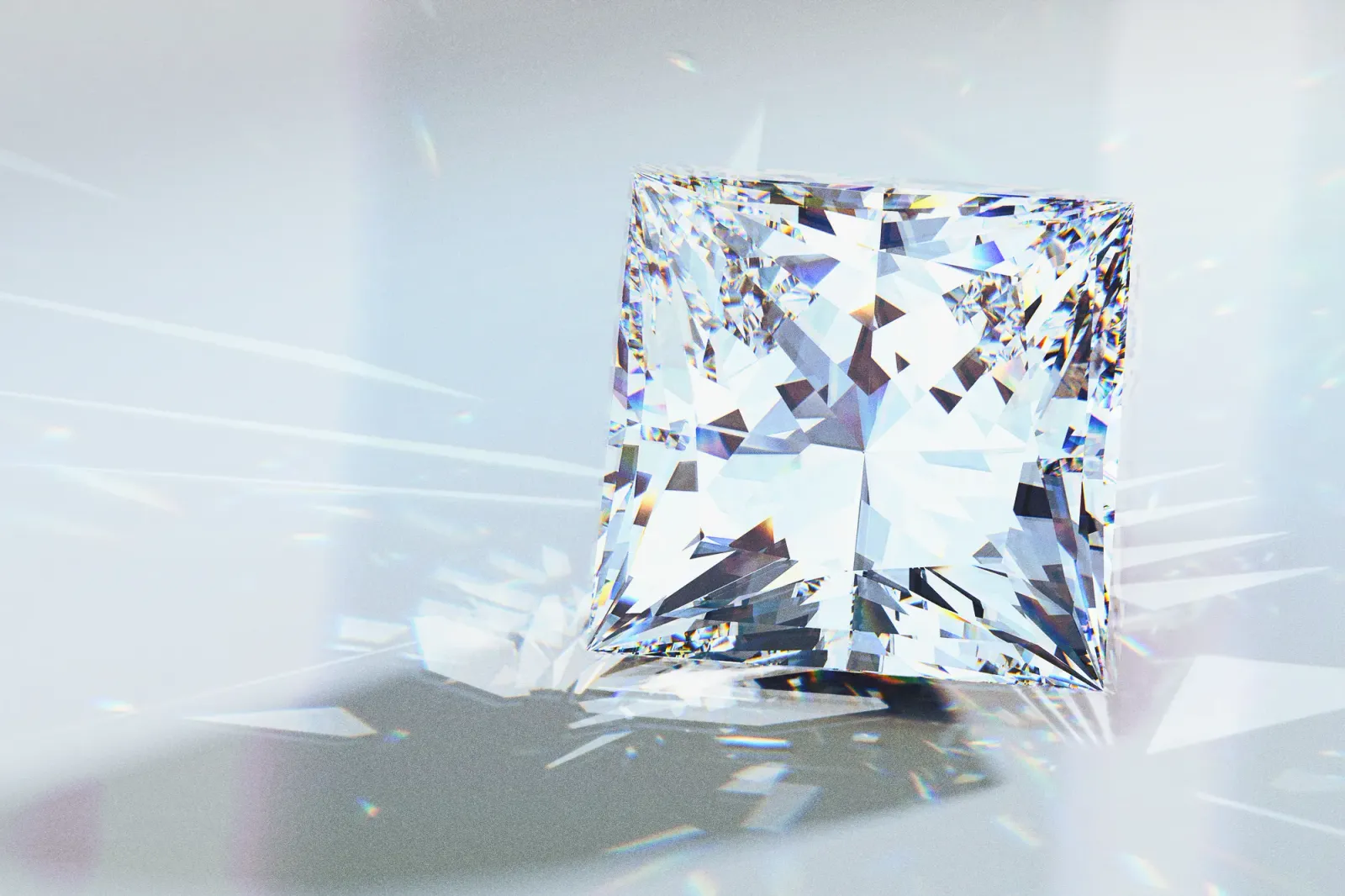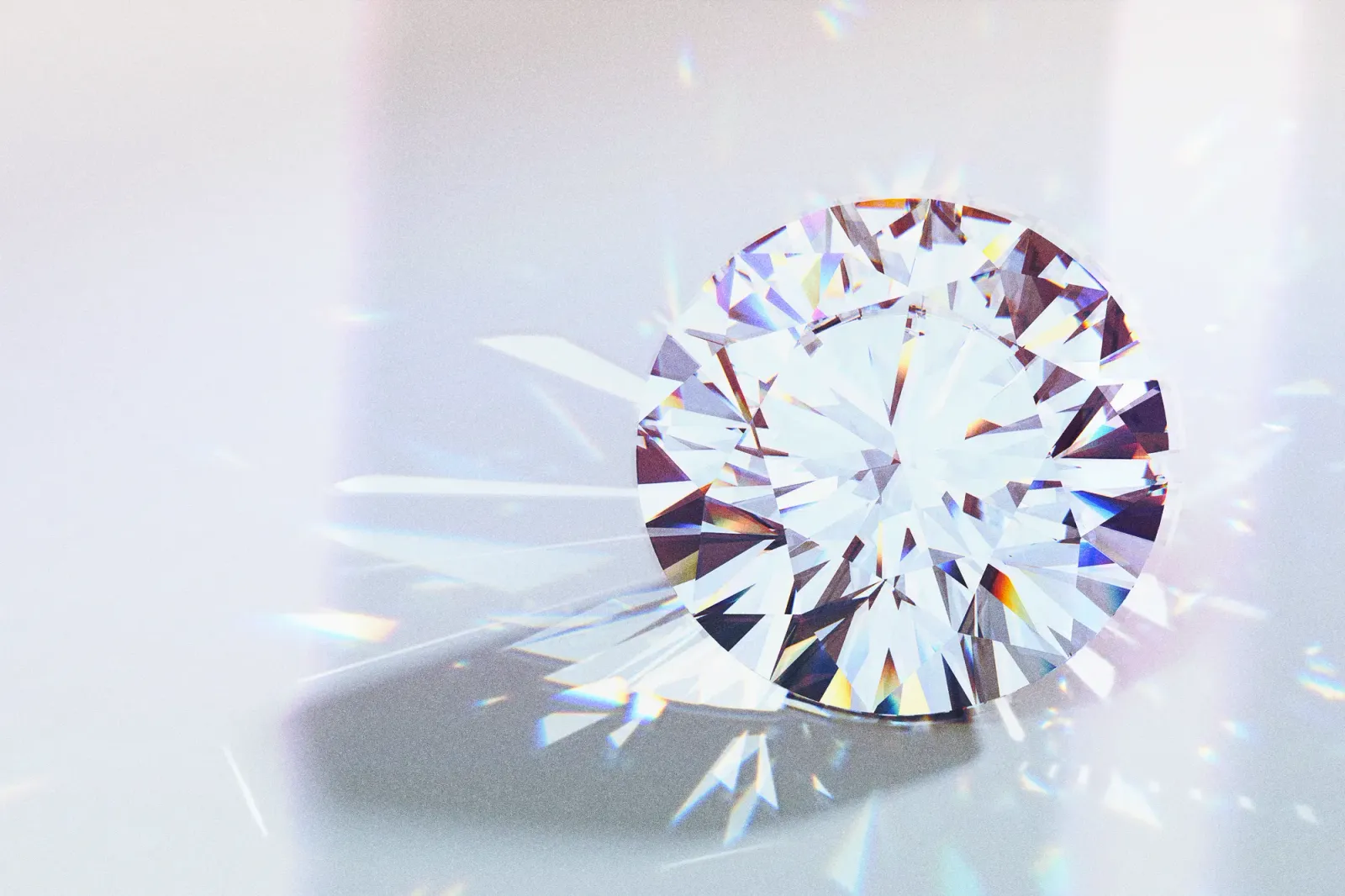The soft, elongated line of an oval diamond makes it an elegant choice with enduring style. Oval diamonds are increasing in popularity, with some notable celebrity engagement rings showcasing ovals for a more individual look. Oval diamonds are brilliant cut, meaning they have plenty of sparkle. They also rival the round brilliant for fire. The elongated shape means oval diamonds look larger than round diamonds of the same weight, and carat-for-carat they come in with a lower price tag than round brilliants.
The bow-tie effect
One thing to really look out for when buying an oval diamond is the 'bow-tie' effect. Whilst the cut of round brilliant diamonds can reflect light back from every part to give even sparkle, the shape of the oval prevents this, and almost all oval diamonds have a dark 'bow-tie' across the narrow middle. In some diamonds the bow-tie is barely visible, whilst in others it's prominent.
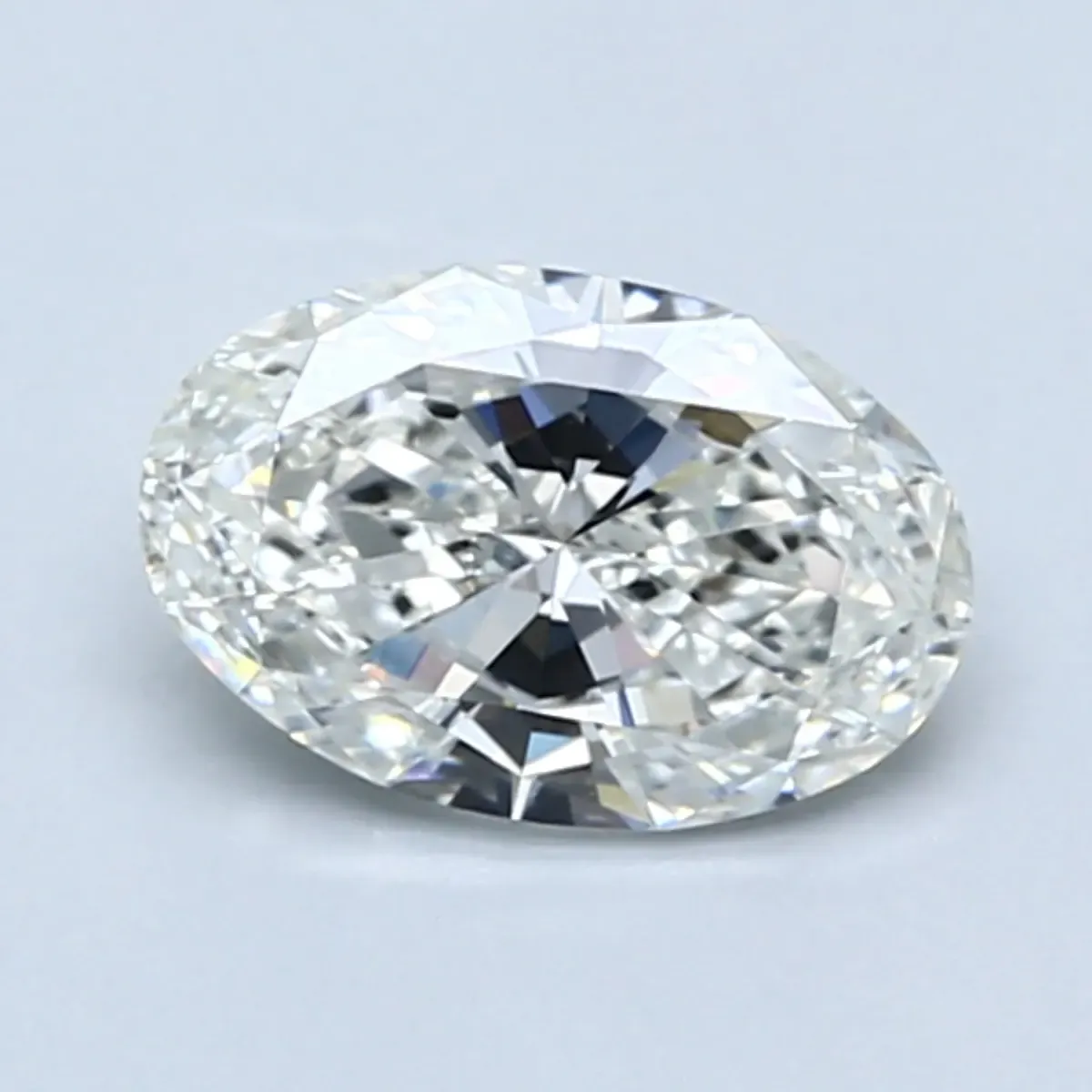
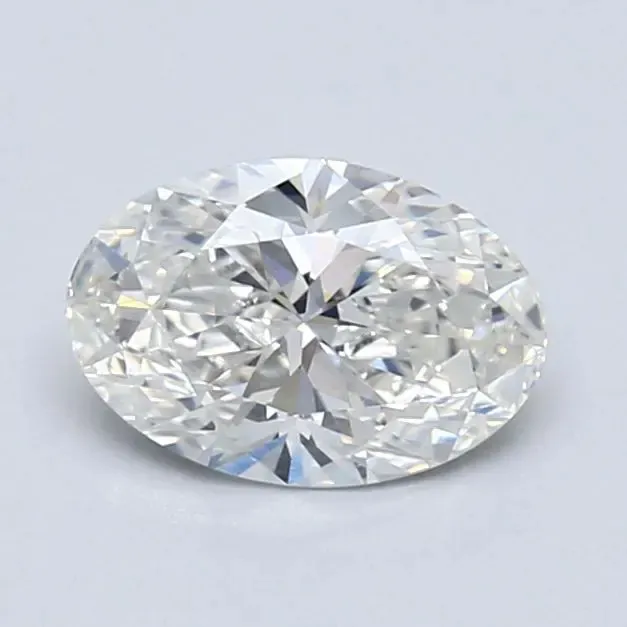
The bow-tie effect dominates the diamond on the left, but is barely visible in the diamond on the right. (Both images c. Blue Nile)
But don't let the risk of a bow-tie put you off - a beautiful oval is by no means an impossible find. They are a fabulous diamond with a rich history and enduring appeal. One of the most famous diamonds in the world is the 105.6 carat Koh-i-Noor, an oval cut diamond shrouded in centuries of myth and legend which currently sits in the British Crown Jewels. The modern, brilliant oval cut was popularized in the 1960s when it was developed by a highly skilled Russian diamond cutter, Lazare Kaplan.
Worn lengthwise, ovals offer a flattering, finger-lengthening look, whilst an east-west setting offers a more striking style.
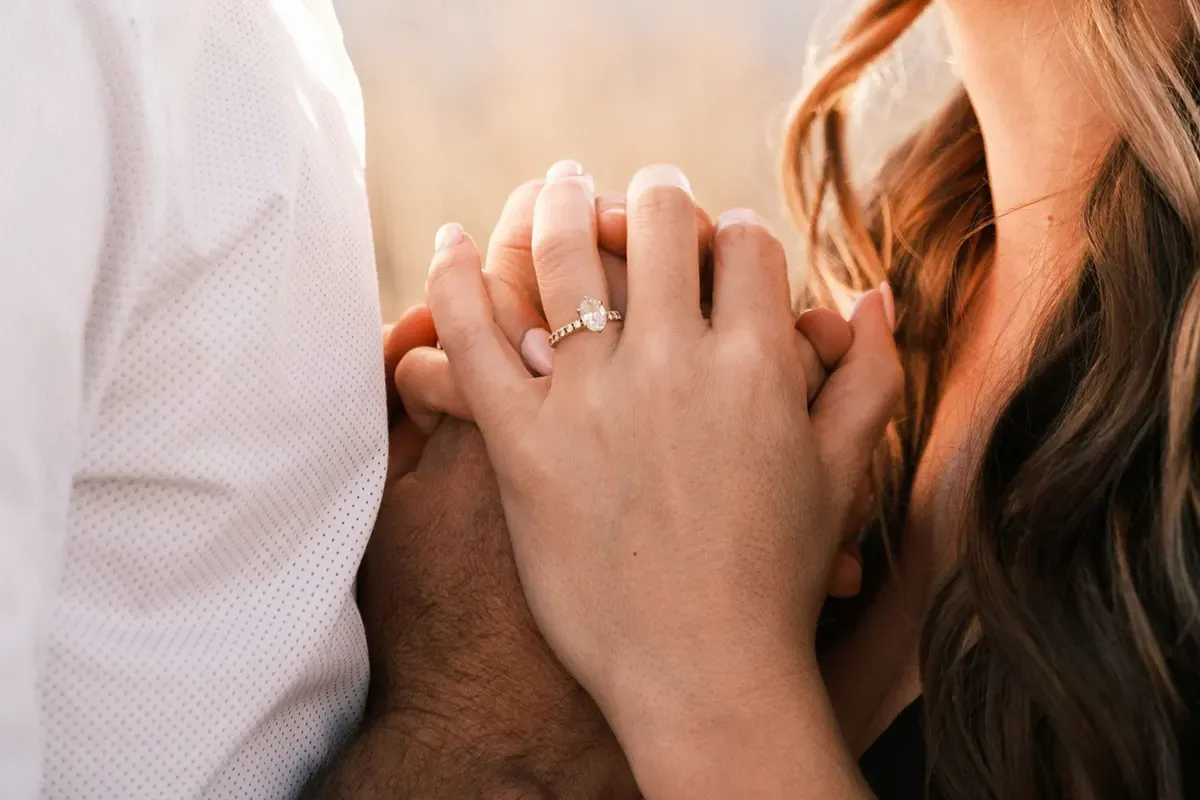
How to buy a well cut oval diamond
Oval cut diamonds are classified as a 'fancy shape', and the variety of oval shapes possible means a hard and fast set of cutting parameters doesn't exist. So whilst certification bodies such as the GIA grade cut quality for round brilliant diamonds, no such grades exist for oval diamonds. So if you see a vendor grading an oval as a good or very good cut, it is the opinion of the vendor, rather than 'official'.
Furthermore, you cannot tell from measurements alone how prone an oval diamond is to light-leakage, and the dark facets of a bow tie. You need to see the diamond - and the high quality videos on sites like James Allen and Blue Nile mean you can readily see those dark shapes. Whilst we would obviously recommend avoiding a prominent bow tie that dulls the overall brilliance of the diamond, some people enjoy the quirky nature of the 'on off' effect of it only appearing at certain angles.
Throughout the pages of The Diamond Handbook we are emphatic about the importance of cut quality in ensuring your diamond sparkles. Whilst there are no hard and fast rules for an 'ideal' oval cut, we've put together some guidelines below to help rule out the bad-buys.
| Oval Cut | |
|---|---|
| Table % | 54% - 63% is excellent, and within two percentage points above or below is very good. |
| Depth % | 59% - 65% is excellent, or within a percentage point above or below is very good. |
| Length to Width Ratio | 1.3 - 1.5 for a classic oval |
| Girdle | Very Thin - Slightly Thick |
| Culet | None - Very Small |
Oval diamonds and shape: length to width ratio
One of the things I like about the oval is that even within the overall category there is variety in shape. Some oval diamonds are narrow, others wider, so not only can you find one that suits your taste, you can match it to a setting that really complements it well.
The length to width ratio is calculated by dividing the length by the width. Ratios between 1.3 and 1.5 give what would be considered the classic oval shape. The diagram below demonstrates how the length-width ratio affects the look of the diamond. As you can see, a wider oval gives a very different look to a narrow one.

Oval diamonds and shape: symmetry and curves
Take a piece of paper and pen, and try to draw an oval. If it's anything like mine it'll look seriously lopsided. A drawing like this gives an extreme example of what makes an oval look askew, rather than pleasing to the eye. Symmetry is key when evaluating an oval diamond. Draw a line running east-west across the middle. Is the top half of the oval the same as the bottom half, is one end pointier than the other? Draw another line north-south and look carefully. Do the shoulders follow the same curve in all four quarters of the diamond? Symmetry of shape is not listed on GIA certification reports. The symmetry being graded is that of the facets - how well they align affects light reflection through the diamond. If a diamond looks a little off and you're not sure why, draw those imaginary lines and it might show you.
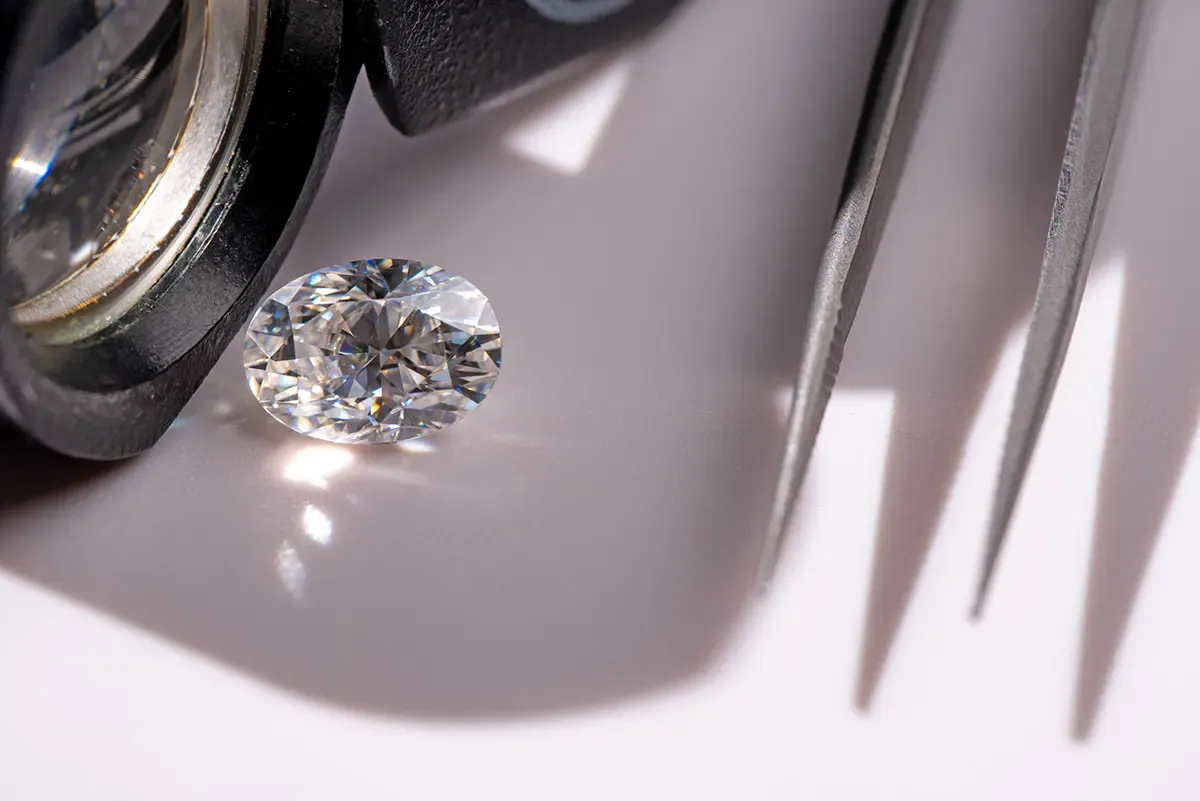
The beauty of an oval is also found in its outline, and the overall shape can vary even in stones of the same carat weight and length to width ratio. Look for a diamond with elegant curves. Some can have wide shoulders, giving a squat appearance. Take a look at the 360 video of this 0.7 ct oval diamond from Blue Nile. Despite having a 1.34 L/W ratio it has very broad shoulders which gives it a thickset, blockish shape. On the other hand, play around with the video for this stunning 0.7ct oval diamond, from Blue Nile with a 1.32 L/W ratio, and you'll see a far more elegant line, as well as a better color and clarity grade for a similar price.
Of course the shape of oval you like best is subjective. Whether slightly rounder or more elongated, there are plenty to choose from. But I would steer clear of anything at the extremes - too rounded and it can look like a bad round diamond, too square and it can look blockish, too long and it can look like a mis-shapen marquis.
Oval diamonds: which color grade?
With a brilliant cut, ovals deliver on sparkle and fire, masking some level of color. However, elongated diamond shapes like the oval and marquise show more color in the tips than in the middle. If you want to avoid color, stick to grades of G or above. And as with all diamond shapes, the larger the diamond the more color will show, so move slightly further up the color scale for larger stones. We have more on how color grades are assigned by the GIA here.
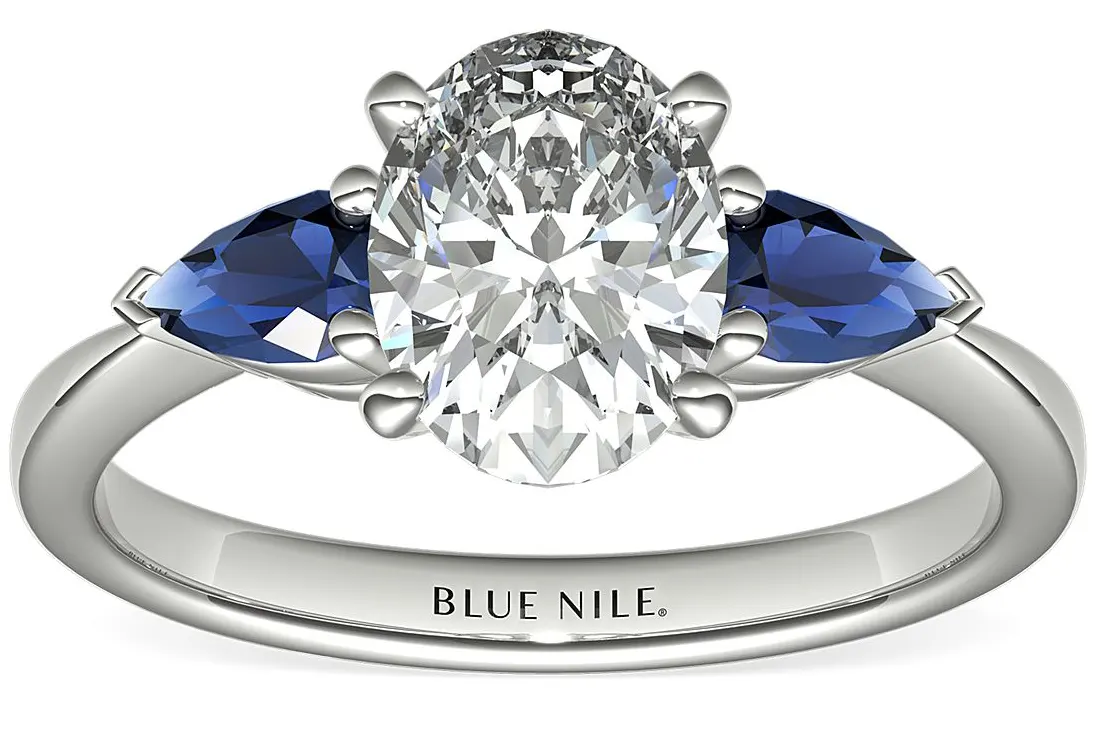
For an individual twist on a classic, the white metal and blue sapphire side stones of this ring set the sparkling center oval off beautifully.
Oval diamonds with grades D-G should be set in a white metal ring such as white gold or platinum. Setting them in yellow or rose gold would reflect warm light into the diamond, dulling the whiteness you have paid for. If you're choosing a yellow or rose gold ring to start with, you can save some money on the color grade and go as low as an I or even a J, as the warmth of the metal will complement the diamond. As you can see, this 0.90ct, I color, VVS1 oval from James Allen shows a tint of color, especially in the tips. It's slightly more apparant in this J color 1.05ct VVS1 oval diamond , but if you are looking for a low color grade they are both great diamonds. Just imagine them nestled in a yellow gold setting like this cathedral pavé halo.
Oval diamonds: which clarity grade?
The scintillation and light return that the brilliant cut gives an oval diamond is a positive when it comes to hiding flaws. Our post on how diamonds are graded for clarity is here, but the best value can be found in diamonds that are 'eye-clean' and have no flaws visible to the naked eye. Personally for an eye-clean diamond under 1ct I would go no lower that SI1, and for a diamond over 1ct no lower than VS2. You can certainly find beautiful stones at these clarity grades, but be sure to avoid significant inclusions in the center of the diamond because they are most visible there.
You certainly don't need a flawless diamond for perfect sparkle, but ultimately inclusions hinder the light performance of a diamond, so a higher clarity grade is less likely to interfere with the light as it bounces around the diamond, hence the higher price tag.
Oval diamonds: price and carat weight
When being cut, oval diamonds waste less of the rough diamond than the round brilliant cut. They are also a less popular choice than the round brilliant which dominates the diamond market. More efficient cutting and less market demand means that when looking at the price-per-carat, oval diamonds can be significantly cheaper. Often, an oval will be around 20-25% cheaper than an equivalent round.
The elongated shape of the oval also means it looks visually bigger than an equivalent carat weight round. The length of shape is also very flattering on the finger, so a win all round!
In summary...
- Ovals offer a soft, elegant shape which comes in cheaper than round diamonds.
- Choose a well cut diamond to maximize light performance; ovals can really deliver when it comes to brilliance, sparkle and fire.
- Keep an eye out for the bow-tie effect, a-symmetry, and overly flat or rounded shoulders.
- Besides cut, decide whether your priority is for a more technically pure diamond with a higher color or clarity grade, or whether your priority is the value to be found in an eye-clean stone.
- Keep to a 1.3 to 1.5 L/W ratio for a classic oval, but the variety of shape the oval offers means you can hunt out the shape that you love the most.
And remember to make the most of the high quality photography and 360° videos on offer from reputable vendors like James Allen and Blue Nile where you can view large inventories of diamonds.
If you like the elongated shape of the oval, but are undecided, you might also want to consider a pear cut or a marquis cut for a striking look.

